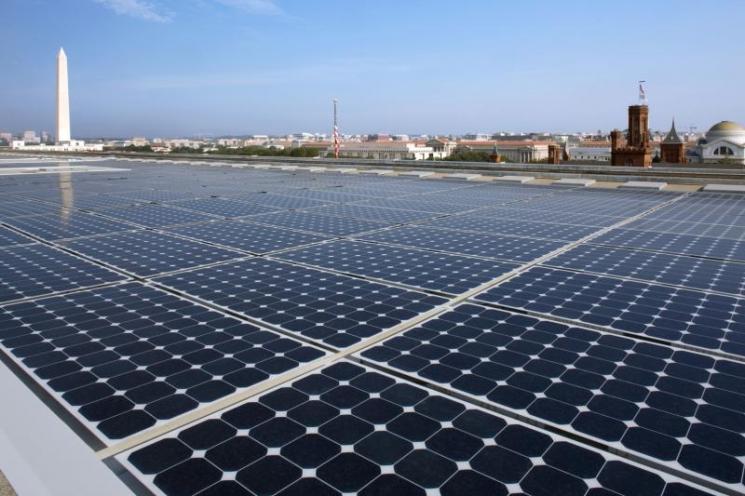The Inflation Reduction Act has gotten a lot of attention for committing about $370 billion to action on climate, much of which will go toward spurring more clean energy production in the United States. One provision that flew under the radar was a $27 billion outlay to the Environmental Protection Agency to establish a Greenhouse Gas Reduction Fund, which could then set up a National Green Bank.
According to the Natural Resources Defense Council (NRDC), the Greenhouse Gas Reduction Fund is authorized to allocate resources to the following initiatives:
- $7 billion to make grants available for states, municipalities, Tribal governments, and eligible recipients to invest in projects for disadvantaged communities, deploy zero-emissions technologies, and carry out other emissions-reducing activities.
- $20 billion to make grants available to eligible recipients that can then invest in projects that reduce greenhouse gas emissions. Of this $20 billion, $8 billion will be dedicated to projects benefiting low-income and disadvantaged communities.
Although the Inflation Reduction Act doesn’t specifically mention setting up a National Green Bank, it gives the Greenhouse Gas Reduction Fund the leeway to capitalize on one. The NRDC is among those who support allocating money to fund the first National Green Bank.
If a National Green Bank is established, it would likely partner with the private sector and communities to invest in clean energy tech and energy efficiency improvements, according to Andrei Cherny, CEO and co-founder of Aspiration, a Los Angeles-based green fintech company.
“In contrast to the typical driver of American clean energy development [a tax credit]…the National Green Bank will lend money for clean energy projects with an expected return on investment,” Cherny wrote in an op-ed for Fortune. “Leveraging a relatively small amount of public funds, the bank will act like a supercharged incubator for clean energy projects and render underdeveloped areas of clean energy more attractive to private investors.”
One reason the NRDC supports using the Greenhouse Gas Reduction Fund to capitalize a National Green Bank is that it would be an efficient use of the grant money.
“A national-level green bank can operate at a scale that lowers the cost of capital, effectively negotiate with private sector partners, and direct funding to local institutions who can coordinate projects in the communities that need it most,” the NRDC said.
“On the operational side, the existence of a national green bank would centralize back-office functions and impact metrics, reducing non-core expenses for local or state lending institutions.”
As the NRDC noted, existing green banks have been effective at spurring new private investments that benefit local communities – as evidenced by recent transactions completed by Green Bank Network members in the United States. These include the following:
- Connecticut Green Bank, which provided $5 million in loan facilities to Budderfly, provides energy and cost-saving services to more than 80 businesses in the state.
- New York Green Bank, which provided a $2.6 million predevelopment loan to support the development of an all-electric multifamily building planned for construction in Brooklyn’s Broadway Triangle.
- Rhode Island Infrastructure Bank, which announced $4.9 million in grants for its Municipal Resiliency Program to help communities fund climate resiliency projects.
- DC Green Bank, which closed a $7 million deal to accelerate the deployment of solar power across the District of Columbia for low-to-moderate income residents.
So far, the financial returns at green banks have been impressive. A 2021 report from the American Green Bank Consortium and the Coalition for Green Capital found that smaller-scale green banks in the U.S. have generated an average of $3.70 in private investment for every dollar the bank invested. The establishment of a National Green Bank could go a long way toward spurring even more investment, advocates say.
“This has the potential to revolutionize how clean energy is financed in the U.S. and accelerate the development of new projects,” Cherny wrote.





